Important lessons from a car guy who can’t afford to take risks
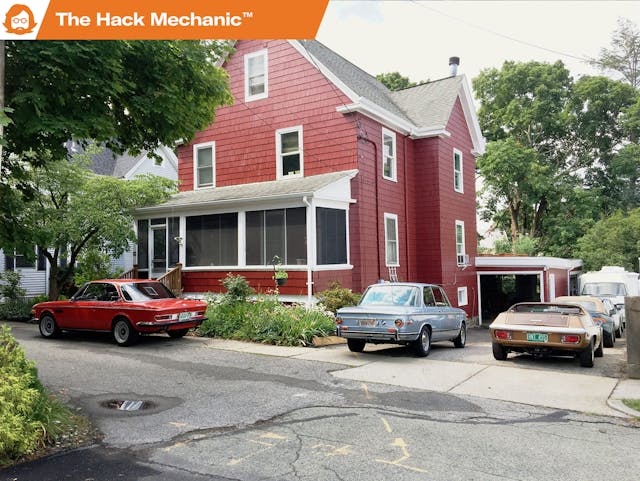
If you’ve been reading this space for some time, you probably have gleaned that my unhinged Hack Mechanic persona is not the only thing bubbling inside my cranium. Underneath I’m actually a very rational, deliberative guy who really tries to think things through, not make decisions or take on risks he’s going to regret, and if he does, at least learn the lesson so it’s less likely to happen again. I thought that this week I’d highlight five vehicles where I leaped and wound up in trouble, and disclose what the lessons learned were.
1999 BMW 528iT Sport Wagon
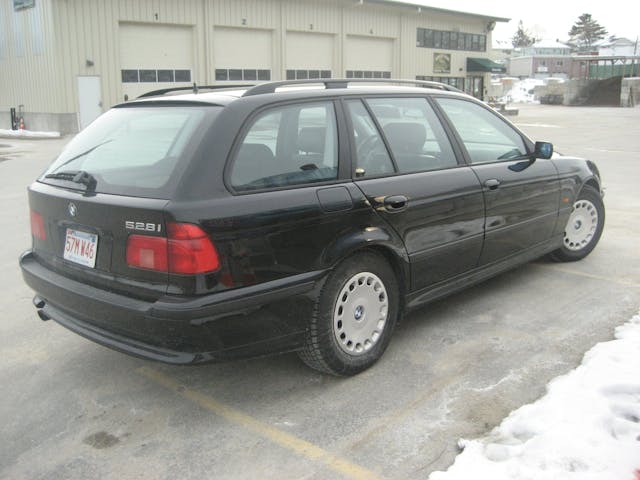
We like what we like. I like rear wheel-drive cars. Having front wheels that steer and deliver power never feels quite right to me, even with cars where the long-standing torque steer problem has been solved. Rear wheel-drive BMWs have been my daily-driver jam for 40 years. About 10 years ago, it made sense to me to move to an E39-body 5 Series wagon. I found one locally with about 150,000 miles on it. It was black with a black interior, and it had the rare combination of the five-speed manual box and the sport package that slightly hunkered-down the car. Initially I loved it, but it turned out to be one of these cars whose purchase puts you on the repair-of-the-week plan without your knowing it. And on this car, it wasn’t just the usual parade of cooling system, fuel delivery, and charging problems. Nor was it having to rebuild the cool-but-troublesome self-leveling rear suspension, as it’s a known trouble spot. In addition to all that, weird things broke. In frigid weather, the oil separator froze and nearly hydro-locked the engine. A front coil spring broke and punctured the tire. Simply getting the rear hatch to work reliably was a battle. As Rosanne Rosannadanna said on Saturday Night Live, it was always something. I was relieved when I sold it.
Lessons learned: The car’s constant neediness made me realize that it was actually an enthusiast car when I needed it to be something more pedestrian. It was from this I learned not to confuse your daily driver and your project cars.
1972 BMW 2002tii

In 2016, when my long-time engineering career ended, I became obsessed with the idea of buying a dead car in some far-flung corner of the country, swooping in, getting it running, and road-tripping it home. It needed to be a car that I knew well, so a BMW 2002 made the most sense. But the more I thought about it, the more I realized that this romantic image of casting all caution to the wind and pitting man against machine and road wasn’t practical. I mean, how exactly are you going to do it? Show up at the seller’s house with a toolbox, a tent, and a sleeping bag and say, “I’m going to camp out here until I get this running and oh, can I use your shower for a week?” At a minimum, the car either needs to be capable of driving off the seller’s property, or you need to tow it a friend or relative’s house where you can do at least the first level of repair and sorting. I did the latter, buying the decade-dead 2002tii sight unseen and accepting an invitation from a guy I’d met once for 10 minutes at a BMW event to stay with him and his wife and wrench on the car in his pole barn. In addition, this fellow scoped out the car for me and gave me a heads-up on what some of its needs were, enabling me to go down there in a rented SUV with parts and tools. (If you’re curious, I wrote about the whole adventure in my book Ran When Parked.)
Lessons learned: You can do this kind of thing, but you really need to have eyes on the car first, come prepared, and then be absolutely merciless in your delineation of what’s truly required to get the car home versus what can wait until you’re in the comfort of your own garage. Otherwise you’ll be on the road for a month.
1976 BMW 2002
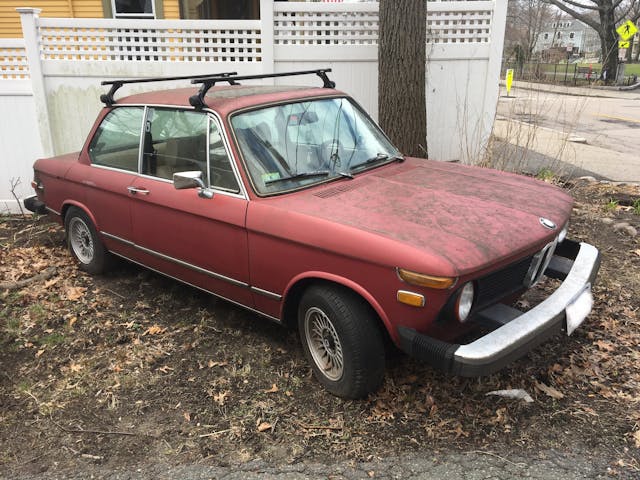
A close friend let me know of a mutual acquaintance one town over from me (in Massachusetts) who was selling his ran-when-parked BMW 2002 due to an impending home renovation project. I contacted the fellow, went over and had a look, was surprised and impressed at the car’s nearly rust-free condition. I got it running with a jump start and starting fluid, made a low cash-on-the-table offer, and bought it. I was positively giddy at my being at the right place at the right time. However, when I drove it home a few days later, the car exhibited an alarming amount of engine noise above around 2500 rpm. Poking around with a mechanic’s stethoscope revealed the noise coming from the oil pan. When I dropped the pan, sure enough, the rod bearings were shot.
Lessons learned: Replacing the rod bearings wasn’t difficult or expensive, and I did fine in the resurrection and re-sale of the car. But while it is well-known that if you can’t test-drive a car, anything can be wrong with it and you won’t know, it was a reminder that hearing an engine run isn’t the same thing as a test drive.
1974 Lotus Europa Twin Cam Special
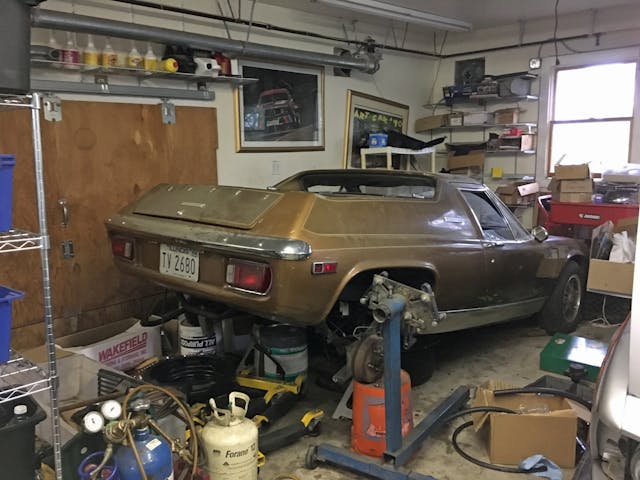
I’ve written quite a bit about the Lotus in this space. When I was in junior high school, I worked for a guy who owned one—it was the first exotic, impossibly low, and angular car that I saw in person, and it hit me right in that special adolescent automotive place. I bought this one sight unseen in 2013 in Chicago; it had 23K on the odometer, but it had been dead since 1979, with an engine that had seized from sitting. I’d revived many dead BMWs but knew nothing about old Lotuses, and this odd, 1600-pound British thing with an engine that had a Ford block and a boutique Lotus head was way more troublesome to resurrect than I’d ever imagined. Even once I got the engine rebuilt, installed, and running, the steps from there to get the car moving, then driving around the block, then driving on the highway, then behaving well enough that I felt I could explore its Lotus-ness, were all waaaaay bigger than in the vintage BMW world I was familiar with. Still, the amount of pleasure I get out of this crazy little thing seems barely legal. (See The Lotus Chronicles for more detail.)
Lessons learned: Oh, many. First, stepping outside your zone of expertise is exciting, but very time consuming. Second, if the goal is to make a Lotus handle like a Lotus is supposed to, that’s a far tougher goal than simply limping it a few miles to a Cars and Coffee. It’s going to cost whatever it’s going to cost, and once you’re in pursuit of that goal, it’s really difficult to shut off the spending tap. Third, even though everyone tells you not to, I did add up the costs, and I’ve got over 20 grand in the car, which is well in excess of what it’s worth. I’m usually not one to do the “underwater” calculation, but it’s important knowing that if I find another basket-case Lotus, it’d cost me similar to get it to the point where it performs like a Lotus should.
1996 Winnebago Rialta
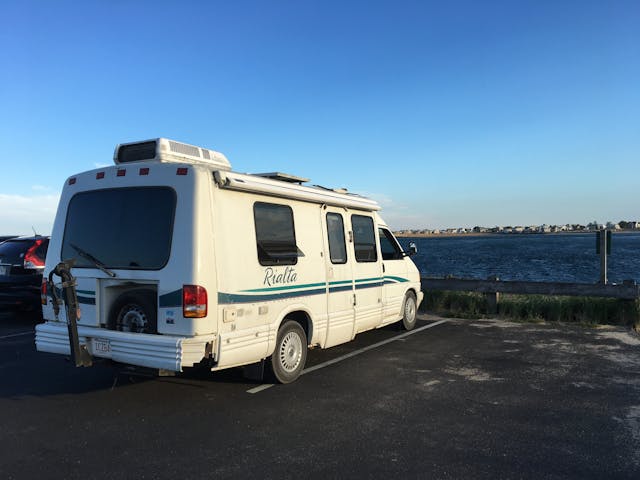
My wife and I used to take the family on beach vacations every summer, for which I’d typically buy a beat-up Suburban and use it as a beach assault vehicle. When the kids fledged and that ended, I floated the idea of buying a small RV, something just slightly larger than the VW campers we had when we were younger. Our middle son lives in Santa Fe, and the idea of road-tripping out there and taking in some national parks on the way was appealing. I wanted something small, parkable, and fuel-efficient, and the used Sprinter-based RVs were all way too expensive. I learned about the Winnebago Rialta—the Volkswagen Eurovan conversion that’s sort of a Westfalia camper on steroids, with a bathroom and a real bed. Even as 25-year-old vehicles, the Rialtas with the VR6 engine are pricey, but the 1995 and ’96 vehicles with the 110-horsepower, five-cylinder Audi engine are more affordable, and when I found a needy one for crapcan Celica money, I jumped on it. Unfortunately, with a 110-hp engine in a 7000-pound vehicle, they’re as slow as the VW campers of yore. For this reason, we’ve never taken it on a big road trip, as I’m sure that on the big western hill climbs we’d be doing 35 mph in the right lane. Instead, we use it for weekends on Cape Cod, where state campgrounds are about $40 a night. There’s been a steady cavalcade of plumbing and electrical issues, but even the beach use notwithstanding, as we’re both now in our 60s, owning a vehicle with a bathroom in it is awesome.
Lessons learned: Bargain RVs have all of the problems of a car and a house, and if you’re traveling with your spouse, it becomes not just your tolerance for imperfection, but theirs as well. Fortunately my wife rolls with it. Due to the Rialta being both too under-powered and a bit too small, I doubt we’ll ever do a real road trip in it, but I don’t think I could’ve learned that lesson without owning it. In that way, it’s been a great starter RV.
As Mark Twain said, “Good decisions come from experience. Experience comes from making bad decisions.” I don’t really think any of these decisions were bad, but I really do try to learn from them nonetheless. I don’t believe that Bob Dylan is a car guy, but I think of his line “And here I sit so patiently / waiting to find out what price / you have to pay to get out of / going through all these things twice” and think he’d be right at home with us.
***
Check out the Hagerty Media homepage so you don’t miss a single story, or better yet, bookmark it. To get our best stories delivered right to your inbox, subscribe to our newsletters.


I have a friend that bought a 2017 5 series that he drove daily 100 miles a day. At 100,000 miles the AC gave out the dealer replaced the whole system for $5500 2 months later it broke again. Fixed it 3 months later broke again! Then radiator broke. The over heat spun a cam bearing. $6,000 later he finally decided to sell the car. I had warned him not to daily it but he’s like its still new what could break at 100,000 miles! The only BMW you can use as a daily is a leased one under warranty. This needs to be on a bumper sticker. That they give you at the BMW dealer. I have only Japanese vehicles. My highest milage one is a 2005 Toyota van with 276,000 miles on it. I had a few things go wrong but I think the most expensive repair was $800 I could have fixed it for $170 but I was feeling lazy and had the dealer do it. I just replaced the original shocks with some KYB’s for $250 rides better then new and it handles what better above 80 then it ever did. I will never own anything made in Europe. Nope. I race my Miata with 116,000 miles on it and nothing ever brakes on it.
I was lucky. My automotive education started before I could even drive! My father had loaned someone some money and gave him a 1962 Sunbeam Alpine as collateral. Well as luck would have it he never replied the loan and I got the car to tinker with. I found the Hayes manual in the trunk and went to town on it so to speak. I found a parts supplier and got her running had a blast with it. I fell in love with roadsters because of that car but it drove me crazy how ofter it would break down even things I had recently fixed! Wiered things would go wrong with it and mysteriously go away. The electrical system had a mind of its own. At one point I was convinced it was possessed. I did get very good at replacing lifters on the side of the road in 15 mins!!!! It taught me to never own a British car ever again. Nope.
“Tolerance for imperfection.” My new gauge for my marriage.
“I became obsessed with the idea of buying a dead car in some far-flung corner of the country, swooping in, getting it running, and road-tripping it home.”
Not only dead cars should be avoided in this potential fantasy-turned-nightmare; I would argue ANY used vehicle that you are unfamiliar – i.e. not intimately familiar with the particular model’s mechanicals – should be trailered home if more than a few hours away.
I purchased a beautiful vintage sports car a few years ago with the intent of flying in and driving home on US 101 up the West Coast. Low mileage, recent repair receipts up the wazoo….I had no qualms about the 600 mile trip. Made it home just fine, but on my first drive after arrival the car wouldn’t start. Long story short, the fuel line for the cold-start enrichment circuit had not been re-installed correctly and was pumping raw fuel onto the top of the engine. Obviously not an ideal situation, especially considering I made the trek without a fire extinguisher. So I thanked my lucky stars and swore never again.
Was it a DBSV8?
Yikes, now you’ve got me worried about my ’01 E39 525i “winter beater”, which I bought with 85k a year ago and which has been dead-set reliable over 11k miles since then (though not before $4k worth of preventative fixes from the local indie BMW shop and excepting the rear hatch release, probably the most single frustrating thing I’ve ever dealt with on car ever). Has the other shoe just not dropped yet?
Your fixation on oddball foreign cars ( BMWs included) is the main problem with your buying habits. They are & always will be money pits due to the usually over engineered type of cars they are. “Ultimate cost machines” would be a better description for these cars. Too exotic for their own good.
I find it odd and illuminating that a Ford econobox with Lotus badge is worth some multiple of any actual Lotus road car.
Too bad it takes most of us a lifetime to figure out that it’s better to buy the best example you can afford – even if that means really stretching to afford it than it is to buy something that will likely drain you of time and money and the will to see it through. Especially very rusty cars – just not worth the trouble.
I admire your perseverance in completing the Lotus resto. Clarkson says Lotus is an acronym; Lots Of Trouble Usually Serious.
Your Europa is identical to one owned by another member of my Infantry Battalion in the 101st at Ft. Cambell between 1975-77. As rare as these are on this side of the pond, it might be the same one. It is actually the only one I have ever seen in person. Never had a ride in it but was parked next to my car often.